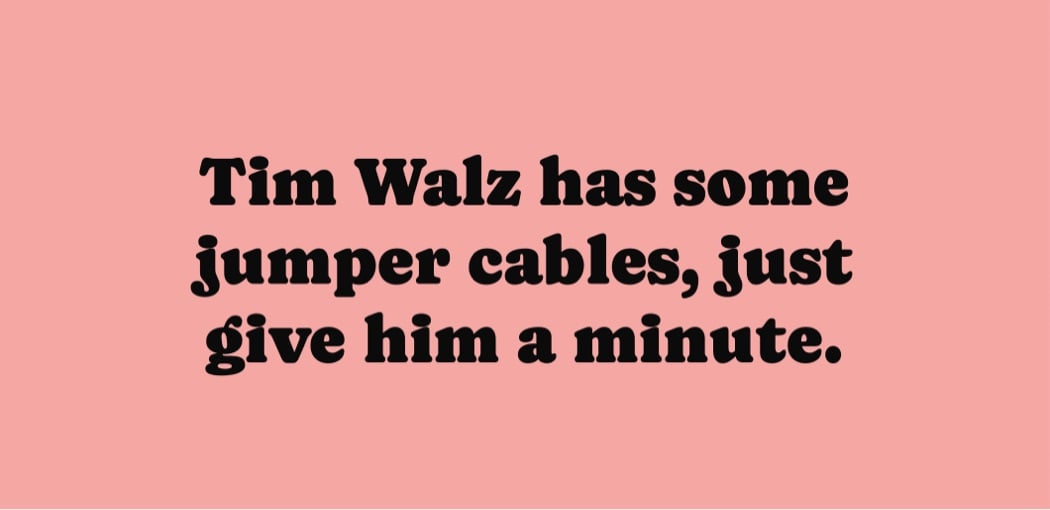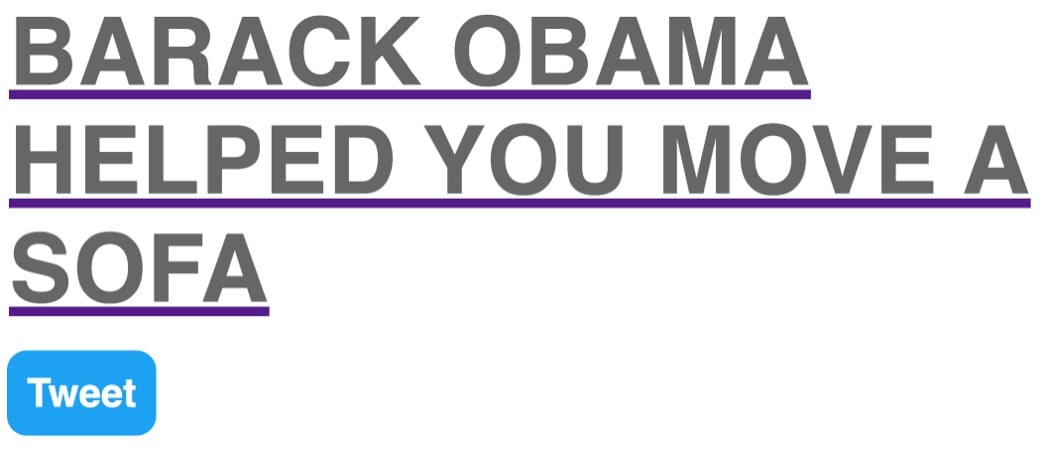kottke.org posts about Mat Honan
In the MIT Technology Review, Mat Honan makes two points about changes in the world of social media with both Bluesky and Threads seeing massive growth in November accelerated by the election and people leaving Twitter. The era of everyone having a uniform social media experience is ending. And that’s good.
The first is that tech and politics are just entirely enmeshed at this point. That’s due to the extreme extent to which tech has captured culture and the economy. Everything is a tech story now, including and especially politics.
The second point is about what I see as a more long-term shift away from centralization. What’s more interesting to me than people fleeing a service because they don’t like its politics is the emergence of unique experiences and cultures across all three of these services, as well as other, smaller competitors.
I loved Twitter early on when it felt like everyone was building their own communities, and then it stopped feeling like that, and then it got worse and worse. For the most part, it seems like my better friends from Twitter went to Threads, but I can’t really figure out the vibe over there, which is annoying because I’m too old to make new friends. I’m on Bluesky and like it very much. One of the more helpful features is letting individual users create their own Starter Packs, so if you want to, for example follow a community of Carly Rae Jepsen fans, you can do that really easily because I made a starter pack for you.
Immediately after Tim Walz was announced as Kamala Harris’s VP pick, the memes started. Most zeroed in on Walz’s potent Midwestern dad energy; he’s the kind of guy who would help a neighbor fix a car, pick you up from the airport, or bring you some soup when you’re sick. For his supporters, Walz is bringing the same kind of energy and hope to the presidential race as Obama did in 2008 and Bernie Sanders did in 2016.
And so of course someone made Tim Walz Fixed Your Bicycle; it’s a collection of things Walz would do for you because he’s just that kinda guy.

Each time you refresh the page, you get a new saying; some of the other ones:
Tim Walz remembers where you parked your car.
Tim Walz has room for a little slice of pie.
Tim Walz is glad to give you a hand with your stroller down those stairs.
Tim Walz will teach you how to parallel park.
The name of the site is a reference to Barack Obama Is Your New Bicycle, a single-serving site1 built by Mat Honan in the run-up to the 2008 election that played on Obama’s likability and down-to-Earthness.

Honan even turned the site into a book. A few months later, folks on Twitter started sharing all the wonderful things that would happen when Obama won the Democratic nomination and I collected a bunch of those tweets into this site.

Thus concludes this short episode of Know Your Meme. ✌️
Every time there’s a new social media app or network that breaks out, someone writes an article about how this new network encourages people to be themselves and have fun without all of the heaviness of other platforms. The latest example of this is Kevin Roose’s NY Times piece about TikTok.
TikTok has none of that. Instead, it’s that rarest of internet creatures: a place where people can let down their guards, act silly with their friends and sample the fruits of human creativity without being barraged by abusive trolls or algorithmically amplified misinformation. It’s a throwback to a time before the commercialization of internet influence, when web culture consisted mainly of harmless weirdos trying to make each other laugh.
In 2016, Jenna Wortham wrote this about Snapchat for the NY Times:
Its entire aesthetic flies in the face of how most people behave on Facebook, Instagram and Twitter — as if we’re waiting to be plucked from obscurity by a talent agent or model scout. But Snapchat isn’t the place where you go to be pretty. It’s the place where you go to be yourself, and that is made easy thanks to the app’s inbuilt ephemerality.
In 2013, Mat Honan wrote this about Vine:
It built a ground up culture that feels loose, informal, and — frankly — really fucking weird. Moreover, most of what you see there feels very of-the-moment. Sure, there’s plenty of artistry that goes into making six second loops, and there are volumes of videos with high production values. But far more common are Vines that serve as windows into what people are doing right now.
Implicit in these pieces is the idea that there’s something intrinsic to these apps/networks that makes them hew closer to real life and/or lightheartedness than older and bigger platforms…the ephemerality of Snapchat, the ease of shooting a Vine video, the fun filters and templates of TikTok. Some part of that is surely true, but what if being small and new is the thing that makes these networks fun? As I wrote in response to Wortham’s article a couple of years ago:
Blogs, Flickr, Twitter, Vine, and Instagram all started off as places to be yourself, but as they became more mainstream and their communities developed behavioral norms, the output became more crafted and refined. Users flooded in and optimized for what worked best on each platform. Blogs became more newsy and less personal, Flickr shifted toward professional-style photography, Vine got funnier, and Twitter’s users turned toward carefully crafted cultural commentary and link sharing. Editing worked its way in between the making and sharing steps.
TikTok probably feels a lot like Flickr or Twitter in the early days, where everyone is exploring and the users are all kind of doing the same things with it. As networks get bigger, they reach a point where there isn’t just one big group exploring the same space together. Instead, you have many big groups who have different goals and desires that all need to fit under one roof (essentially, politics becomes necessary)…and that can get messy, particularly when the companies running these apps want to appeal to the widest possible audience for capitalization purposes.
Novelty is probably the biggest factor though. TikTok is fun because it’s new. When you join up, you get new superpowers and flexing those abilities gives the old brain a shot of dopamine, particularly when the flexing is social. Later, when many of the social possibilities have been explored and even exploited, fun becomes harder to come by. Even Twitter can still be fun — see the replies to Wortham’s recent tweet about fave NYC moments — but the templates for interaction on the platform have long since been set in stone. It would be very surprising if a large & mature social network came along that didn’t also get less fun and “real” as it developed. That would be a special achievement.
From the NY Times, the excellent Jenna Wortham on How I Learned to Love Snapchat. This bit caught my eye:
Its entire aesthetic flies in the face of how most people behave on Facebook, Instagram and Twitter — as if we’re waiting to be plucked from obscurity by a talent agent or model scout. But Snapchat isn’t the place where you go to be pretty. It’s the place where you go to be yourself, and that is made easy thanks to the app’s inbuilt ephemerality.
I wonder if Snapchat’s intimacy is entirely due to the ephemerality and lack of a “fave-based economy”. Blogs, Flickr, Twitter, Vine, and Instagram all started off as places to be yourself, but as they became more mainstream and their communities developed behavioral norms, the output became more crafted and refined. Users flooded in and optimized for what worked best on each platform. Blogs became more newsy and less personal, Flickr shifted toward professional-style photography, Vine got funnier, and Twitter’s users turned toward carefully crafted cultural commentary and link sharing. Editing worked its way in between the making and sharing steps. In 2013, Mat Honan wrote of Vine:
It built a ground up culture that feels loose, informal, and — frankly — really fucking weird. Moreover, most of what you see there feels very of-the-moment. Sure, there’s plenty of artistry that goes into making six second loops, and there are volumes of videos with high production values. But far more common are Vines that serve as windows into what people are doing right now.
Sounds familiar, right? I’m almost positive that when Instagram was first blowing up, similar things were written about it in comparison to Flickr. Now, as Wortham notes, Instagram is largely a place to put your heavily curated best foot forward. But scroll back through time on anyone’s Instagram and the photos get more personal and in-the-moment. Even Alice Gao’s immaculately crafted feed gets causal if you go back far enough.
Although more than a year older than Vine and fewer than two years younger than Instagram, Snapchat is a relatively young service that the mainstream is still discovering. It’ll be interesting to see if it can keep its be-yourself vibe or if users tending toward carefully constructing their output is just something that happens as a platform matures.
When Stewart Butterfield’s first game company wasn’t going all that well, he and his team decided to focus on one of the game’s features that enabled players to share images. Before long, Flickr had taken over the web, and in some ways, launched a new era of social media. So Stewart went back to his original passion. And his next game flopped. So he focused on an internal communication tool his team had built to better work on the game. That became a new product called Slack. And Slack could be huge. In Wired, Mat Honan does an excellent job tracing the career of Stewart Butterfield, and in doing so, paints a very accurate portrait of the evolution of the start-up world: The most fascinating profile you’ll ever read about a guy and his boring startup.
This compilation of videos shot with Vine is surprisingly good and a nice illustration of what Mat Honan is getting at in Why Vine Just Won’t Die.
Vine started from scratch. It built a ground up culture that feels loose, informal, and — frankly — really fucking weird. Moreover, most of what you see there feels very of-the-moment. Sure, there’s plenty of artistry that goes into making six second loops, and there are volumes of videos with high production values. But far more common are Vines that serve as windows into what people are doing right now. Many of the most popular Vines appear to be completely off the cuff. They don’t have to be great or slick or well produced. In some ways, its better that they’re not, because it creates a lower threshold if you just want to, you know, share a video of your cat. They have something that trumps quality, which is authenticity.
That authenticity is driving a distinct emerging culture. One that stars people like Riff Raff and Tyler, the Creator, and an army of kids whose names you’ve never heard of but who can still generate hundreds of thousands of likes and re-Vines, and even large scale in-person meetups. It’s the triumph of the loop, yes, but it’s also the triumph of youth.
Take a moment to stroll through Vine’s “Popular Now” videos, and you’d have to be willfully ignorant to not notice that those on Vine are distinctly younger, distinctly blacker, and distinctly, well, gayer than society in general. In short, it’s cool. It’s hip. It’s a scene. If Instagram is an art museum, Vine is a block party.
I was going to make a joke about this being what TV is going to look like in five years, but I think you could put 30 minutes of this on MTV2 or whatever, with six-second Vine-style ads placed seamlessly in the mix, and you’d have yourself a hit show. (via ★interesting)
Writing for Wired, Matt Homan Mat Honan on Betaworks’ race to build a replacement for Google Reader in just 90 days. If you are interested in a 35,000-ft view on how Web-based software is built, read this.
McLaughlin saw a blog post in the Fall of 2012 speculating that Google Reader, choked of resources, was shutting down. He sent a teasing note to a friend at Google offering to “take it off their hands.” To his surprise, he got a serious reply. Google, his friend replied, had concluded that it couldn’t sell the name, user data, or code base (which would only run on their servers) and so there was nothing to actually buy.
The following February, McLaughlin, now full-time at Digg, bumped into this same pal at a TED conference. The friend warned him to act fast if he really did want to develop a Reader. “He said ‘I’m not telling you anything, but we’re not going to keep this thing around forever and maybe you want to have something ready by the end of the year.”
But instead of year’s end Google announced plans to shutter Google Reader on July 1. That same night, Digg put up a blog post announcing that it was going to build a replacement. The Internet went crazy.
Loved seeing ye olde kottke.org represented in the Digg Reader mockups, and I’m looking forward to checking out the service when it launches.
After taking in a four-hour keynote at the Google I/O conference, Mat Honan is transported to a magical place called Google Island.
The soft, froggy voice startled me. I turned around to face an approaching figure. It was Larry Page, naked, save for a pair of eyeglasses.
“Welcome to Google Island. I hope my nudity doesn’t bother you. We’re completely committed to openness here. Search history. Health data. Your genetic blueprint. One way to express this is by removing clothes to foster experimentation. It’s something I learned at Burning Man,” he said. “Here, drink this. You’re slightly dehydrated, and your blood sugar is low. This is a blend of water, electrolytes, and glucose.”
I was taken aback. “How did you…” I began, but he was already answering me before I could finish my question.
“As soon as you hit Google’s territorial waters, you came under our jurisdiction, our terms of service. Our laws-or lack thereof-apply here. By boarding our self-driving boat you granted us the right to all feedback you provide during your journey. This includes the chemical composition of your sweat. Remember when I said at I/O that maybe we should set aside some small part of the world where people could experiment freely and examine the effects? I wasn’t speaking theoretically. This place exists. We built it.”
I was thirsty, so I drank the electrolyte solution down. “This is delicious,” I replied.
“I know,” he replied. “It also has thousands of micro sensors which are now swarming through your blood stream.”
“What… ” I stammered.
“Your prostate is enlarged. Let’s go hangout now. There’s some really great music I’d like to recommend to you.”
You could consider this a follow-up to 2004’s EPIC 2014 by Robin Sloan and Matt Thompson.
“You have a secret that can ruin your life.” That’s according to Mat Honan, and he should know. Several months ago he saw much of his online life hacked and deleted in an instant. In this Wired cover story (that includes some valuable tips for protecting yourself online), Honan breaks the news that “no matter how complex, no matter how unique, your passwords can no longer protect you.”
From Mat Honan at Gizmodo, an account of how Yahoo bought Flickr and then frittered away all its potential.
Because Flickr wasn’t as profitable as some of the other bigger properties, like Yahoo Mail or Yahoo Sports, it wasn’t given the resources that were dedicated to other products. That meant it had to spend its resources on integration, rather than innovation. Which made it harder to attract new users, which meant it couldn’t make as much money, which meant (full circle) it didn’t get more resources. And so it goes.
As a result of being resource-starved, Flickr quit planting the anchors it needed to climb ever higher. It missed the boat on local, on real time, on mobile, and even ultimately on social-the field it pioneered. And so, it never became the Flickr of video; YouTube snagged that ring. It never became the Flickr of people, which was of course Facebook. It remained the Flickr of photos. At least, until Instagram came along.
A common reaction to Apple’s announcement of the iPhone 4S yesterday was disappointment…Mat Honan’s post at Gizmodo for instance.
I was hoping for something bold and interesting looking. The iPhone 4 was just that when it shipped. So too were the original iPhone and the iPhone 3G. If I’m going to buy a new phone, of course I want it to look new. Because of course we care about having novel designs. If we didn’t we’d all be lugging around some 10-inch thick brick with a 12 day battery life.
Mat’s is an understandable reaction. After I upgraded my iPhone, Macbook Pro, and OS X all at once two years ago, I wrote about Apple’s upgrade problem:
From a superficial perspective, my old MBP and new MBP felt exactly the same…same OS, same desktop wallpaper, same Dock, all my same files in their same folders, etc. Same deal with the iPhone except moreso…the iPhone is almost entirely software and that was nearly identical. And re: Snow Leopard, I haven’t noticed any changes at all aside from the aforementioned absent plug-ins.
So, just having paid thousands of dollars for new hardware and software, I have what feels like my same old stuff.
Deep down, when I stop to think about it, I know (or have otherwise convinced myself) that these purchases were worth it and that Apple’s ease of upgrade works almost exactly how it should. But my gut tells me that I’ve been ripped off. The “newness” cognitive jolt humans get is almost entirely absent.
For me, yesterday’s event, Apple’s continued success in innovation *and* business, and the recent CEO change provided a different perspective: that Apple makes two very complementary types of products and we should be excited about both types.
The first type of product is the most familiar and is exemplified by Steve Jobs: Apple makes magical products that shape entire industries and modify social structures in significant ways. These are the bold strokes that combine technology with design in a way that’s almost artistic: Apple II, Macintosh, iPod, iPhone, and iPad. When they were introduced, these products were new and exciting and no one quite knew where those products were going to take us (Apple included). That’s what people want to see when they go to Apple events: Steve Jobs holding up a rainbow-hued unicorn that you can purchase for your very own.
The second type of product is less noticed and perhaps is best exemplified by Apple’s new CEO, Tim Cook: identify products and services that work, continually refine them, innovate at the margins (the addition of Siri to the iPhone 4S is a good example of this), build interconnecting ecosystems around them, and put processes and infrastructure in place to produce ever more of these items at lower cost and higher profit. The wheel has been invented; now we’ll perfect it. This is where Apple is at with the iPhone now, a conceptually solved problem: people know what they are, what they’re used for, and Apple’s gonna knuckle down and crank out ever better/faster/smarter versions of them in the future. Many of Apple’s current products are like this, better than they have ever been, more popular than they have ever been, but there’s nothing magical about them anymore: iPhone 4S, iPod, OS X, iMacs, Macbooks, etc.
The exciting thing about this second type of product, for investors and consumers alike, is Apple is now expert at capturing their lightning in a bottle. ‘Twas not always so…Apple wasn’t able to properly capitalize on the success of the Macintosh and it almost killed the company. What Tim Cook ultimately held up at Apple’s event yesterday is a promise: there won’t be a return to the Apple of the 1990s, when the mighty Macintosh devolved into a flaky, slow, and (adding insult to injury) expensive klunker and they couldn’t decide on a future direction for their operating system (remember Copland?). There will be an iPhone 5 in the future and it will be better than the iPhone 4S in significant & meaningful ways but it will also *just work*. And while that might be a bit boring to Apple event watchers, this interconnected web of products is the thing that makes the continued development of the new and magical products possible.
Remember the @BPGlobalPR Twitter account that sharply lampooned BP’s response to their oil disaster in the Gulf? Mat Honan has an interview with the person responsible. (And it’s not Mike Monteiro.)
The idea was mine, and all the long form writing, talks, and speeches were me. But a lot of tweets — a lot of my favorite tweets — weren’t mine. I edited and maybe tweaked some of them, but there’s no way I would have been able to come up with the quality or volume of jokes without a good team. We had about 15 people, and those writers deserve a lot of the credit. Some contributed every day. My dad did one, even. I sent him a message and told him about it, and I was like, “fuck, I’m not sure what he’ll think.” But he responded immediately with a joke.








Stay Connected